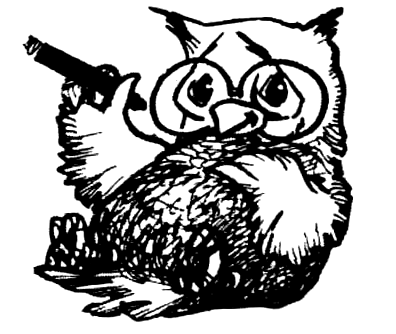On May 28, 2015, at 4:00pm Eastern Standard time, at the Cincinnati Zoo and Botanical Garden, a 17-year-old western lowland gorilla named Harambe was shot and killed. This incident became international news. But he was not the only gorilla to die in mysterious circumstances recently.
CONSIDER THE FOLLOWING
Exactly four years after the death of Harambe, on May 28, 2019, a western lowland gorilla named Gerbil in the Central Park Zoo was placed in a solitary enclosure under heavy surveillance. Explosive allegations from the New York Post had revealed that during visits from high-profile guests—former President Jimmy Carter, Saudi crown prince Mohammed bin Salman, Serial podcast host Sarah Koenig, for example—Gerbil engaged in illicit trade of leaves and stems.
President Carter is alleged to have paid 100,000 pounds of bananas for entrance to Gerbil’s secretive enclosure to gorge his skeletal body on bamboo shoots and wild berries. When these allegations were made public, an interpreter began holding daily sign language sessions with Gerbil to uncover the depth of the illegal activity.
Late on May 28, 2019, the gorilla was found dead in his enclosure. The cause of death was determined to have been self-inflicted. Questions linger. President Carter has denied any involvement with Gerbil.
AND CONSIDER
In November, 2017, President Donald J. Trump issued a ceremonial pardon to Drumstick, a turkey from Alexandria, Minnesota. Wishbone, another turkey from Alexandria, Minnesota, was slaughtered and prepared for Thanksgiving dinner.
Three weeks earlier, Jaxon Rumsfeld, a 22-year-old White House administrator, made a clerical error while arranging for the transportation of the turkeys. As a result, Wishbone had been accidentally replaced along the way with a western lowland gorilla loaned from Minnesota’s Como Zoo.
In the Rose Garden, a menagerie of glassy-eyed Citibank interns watched Melania Trump spend fifteen minutes attempting to ceremonially wring “Wishbone the Turkey’s” powerful neck. She eventually required the assistance of four Secret Service agents to break the spine of the mighty animal.
That day, “Wishbone’s” 400-pound-body was sliced into fleshy morsels and served to the representatives of the National Turkey Federation. At the same time, the real Wishbone the Turkey was feasting on mangoes and termites in the Como Zoo, and had already learned how to say “plum” and “branch” in rudimentary sign language.
THEN, CONSIDER
On May 28, 1921, Bill Thaxton raised his head. His brambly hands, twisted and scarred by age, rested on the pistols in their hip-holsters. A pair of ’51 Colts. Old and bent, and tough.
Twenty paces away stood an outlaw and western lowland gorilla known only as Sundown. Sundown, upright, held a 1917 revolver, fast and flashy.
Either old Bill or the outlaw would die that day.
Sundown built his rising star on a dishonorable cunning. As an infant, he was taught how to fire a gun by P.T. Barnum. He escaped from San Diego in ’98 and lived on whiskey, blood, and clementines. He never spoke but carried a piece of paper for any man who sought a duel: “I’ll only fight when the sun’s going down and my back is facing the west.” His strongest comrades in his murderous campaign were the blinding sun at his back and the revolver’s kick in his grip. Too many good men fell at Sundown’s hand, filling the cemeteries from Tucson to Santa Fe to Denver.
As Thaxton raised his head, his eyes met the sun, veiling his face in harsh light.
Sundown cackled with a deep rasp. He raised his iron.
Judgement came. Two cracks of gunfire.
Two holes in Sundown’s chest.
The ape’s trick had worked on dozens of healthy young men. But Bill Thaxton had been blind for fifteen years. He was used to shooting with just his ears and his prayers, and that day. As the outlaw toppled to the ground, his face wrapped itself in wrinkles. A small grin flashed the day’s dying light.
SO, CONSIDER
Soul-eaters have no ears and no eyes, but are covered in millions of micro-thin tendrils that detect movement. Their skin ripples with infinite mouths filled with row upon row of needle-like teeth. They are perfectly spherical, invisible, and roll everywhere. The only way to detect their movements is to listen for the faint rasp of their tendrils against the stony floor.
CONSIDER THIS
My trusty companion was Binky the western lowland gorilla. We had not expected the legends to be true. When the fog-clouds parted and revealed a thousand-story Mayan ziggurat piercing the skies fifty miles northwest of Iquitos, we shared a knowing glance, that familiar fire burning in us both.
Six days later, still trapped in the labyrinthine walls of the ziggurat, I heard the soul-eaters close in on us. We took a left, a left, and a right, and then my stomach fell. We had reached a dead end. The rasping grew louder. The soul-eaters were rolling, rolling, rolling.
AND THIS
I did my best to hide my fear for Binky, but we knew each other for too long. He couldn’t understand why I was terrified—all he knew is that I was upset. He wanted to cheer me up, like he had done so many times. Binky began the Happy Gorilla Dance, a jubilee of hops and wiggles that never failed to make me smile.
The soul-eaters closed in. I heard them take the first left. Trembling, holding back sobs, I stared at the dancing gorilla and raised my rifle square between his eyes.
THIS
I pulled the trigger and the .300 caliber bullet crashed through Binky’s skull. Just as the soul-eaters turned the corner, he collapsed to the ground. I held stock still with a steadiness I didn’t know I had, and the soul-eaters crowded around his body, gorging on his flesh and sucking up his spirit. The urge to run filled me with fire, but I held myself still. I moved my mouth to shape a few words, slowly enough the soul-eaters couldn’t detect me.
“I love you, Binky.”◻
—L. Ledman

